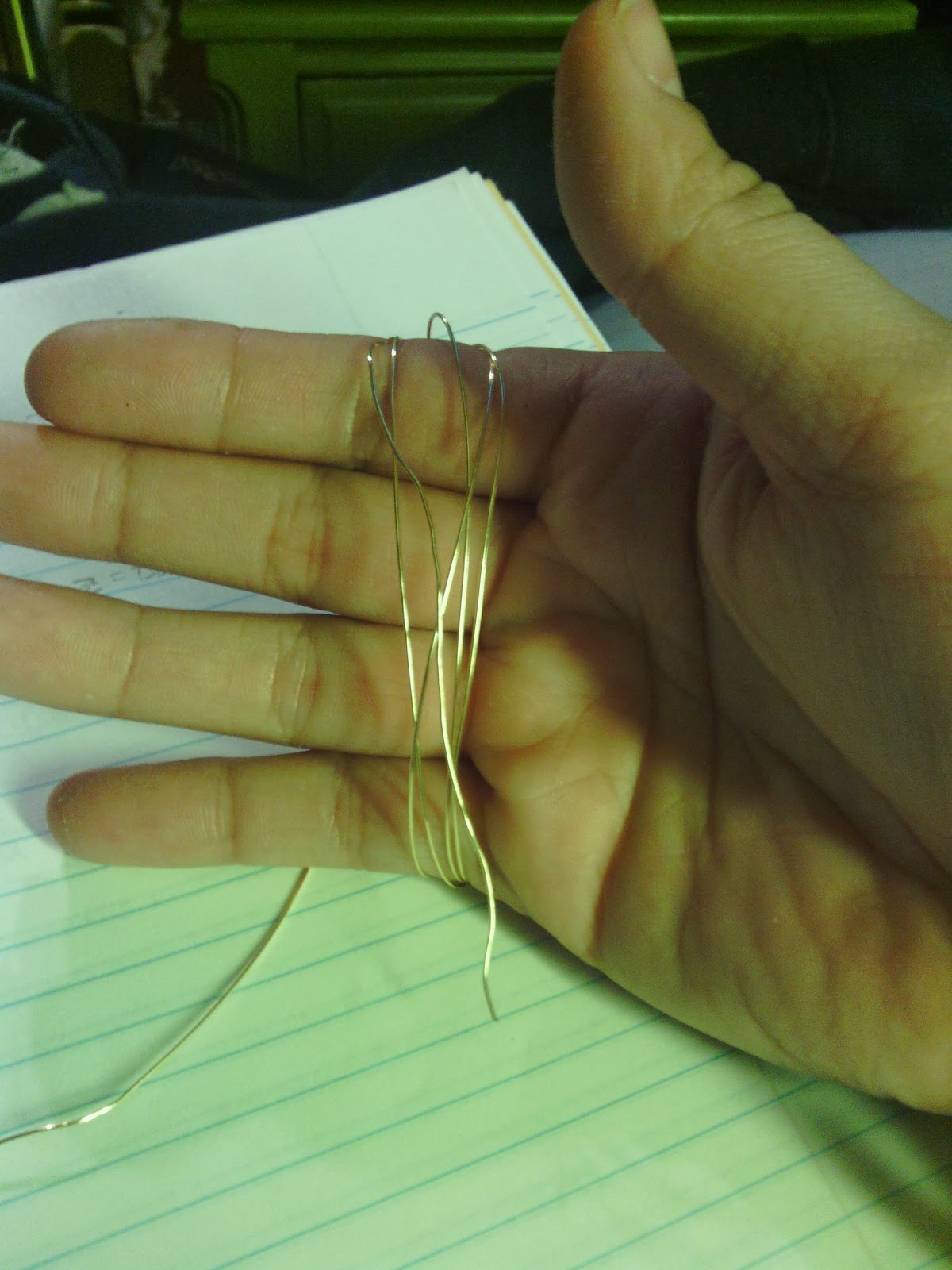At the rennaissance festival, there was a woman weaving wire around a stick in a very cool way, and when I asked her what it was, she said it was a 'viking stitch'. It looked awesome, so I filed it away to learn how to do later. Because I was running low on wire, I made this bracelet rather than a necklace. I really wish I had a pic of what she was working on, but I guess you can make do with my sub-paar attempts (they still look cool, just not as cool as hers.
I started out with this really fine gold wire I got from a craft store a few years back. Sorry there aren't any more details on it, but I don't remember much more. I started with about an arms length, then worked from there. Actually, I stopped at the end of that one, but the second one I did I added on to.
In any case, you start by making 5 equal loops in the wire like so. If you look it up anywhere else, they'll say to wrap it around a credit card. I was lazy. You should trust them, since it does actually make it easier, since they're guaranteed to be the same size.
In any case, now you wrap it like so. Remember that this part is done with the end of that arms-length piece.
Spread the five loops out like so, relatively flat.
You now want to wrap the ends around the top of a round stick thing. I chose my pencil because it was convenient. Another suggestion: Go get something more like a dowel rod. this particular pencil was a bad choice due to its bumps, clips, etc. You want something smooth, or it's a monster to get off.
At this point, the hanging end should be lying next to one of your loopies like so.
I made a tactical error in starting. As soon as you reach the step above, tape it. Hard. leave the end of the loops exposed, but everything else should be held pretty tight.
Once that's done, start looping. Go in the right side o the loop, then loop around the the right side of the next loop, etc.
Basically, do this. Repeatedly. When you finish one circle, start looping on the other loops.
Like so.
To illustrate my point about my pencil being a bad choice: you want your loops to be even. This is definitely not even. All the loops are on one side, with the empty stuff on the other. No good.
As you can see, they're all over on this side. Looks good on this side, but the empty space pictured above isn't good.
As you go down, it should kinda even out, and look something like this.
Or this. As you may or may not be able to see, my bad start with too much space was pretty much evened out in the grand scheme of things.
The real problem is getting it over that bump and the clippy-thing while I take it off.
But I managed. So here it is, this cage-looking thing. At this point, you start stretching it. The easiest way of doing this is with a special tool made for it: a board with progressively smaller holes drilled in it.
Me? I'm lazy, so I just stretched it with my hands. Not so nice for the hands, but it's not too bad either. Just remember to go from the top (loopy end) to the bottom.
This one stretched out to about 1 1/3 the size it originally was, and looks much better this way, if I do say so myself.
I then took the end/leftover wire and used it to attach it to the loopy end. Tadaa!

















































